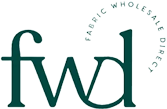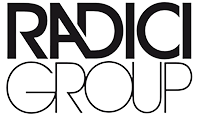Standard Production Environment
01
Standardized clothing production processes can ensure the quality and accuracy of mass production.
02
Standardized clothing production environments can ensure that product quality meets the corresponding standards.
03
Standardized clothing production environments can effectively manage costs, reduce waste, and improve business performance.
04
Standardized clothing production environment can promote the transformation of enterprises towards sustainable development.
We have extensive experience in OEM and ODM services, allowing us to meet customers' needs for personalized and customized products. We provide our customers with exclusive one-stop services, from research and development, to production and delivery.Our modern factory covers an area of nearly 6000 square meters and employs over 200 professional employees, each of whom has undergone specialized training and possesses excellent skills and work experience. They are dedicated to providing you with high-quality products and premium services.
Can provide personalized styling recommendations and create different design outcomes that meet customer needs by deeply understanding their brand positioning and style characteristics. The design team can emphasize the superior craftsmanship and long-standing production experience of the factory in terms of advantages.
Can offer environmentally friendly fabric choices based on customer environmental requirements, as well as provide customized fabric services based on customer needs. The R&D department can leverage the advantages of the factory’s own fabric inventory and recognized export certification services.
Can produce the appropriate finished products based on customer orders and check the product quality accordingly. The large workshop can also meet customers’ large-volume requirements, and the export certification services are advantageous for the production department.
Can provide customers with recommended solutions for accessories, printing, and other production aspects based on their needs. Additionally, as a large-scale clothing factory, the factory has its own purchasing channels, and can leverage them to offer cost advantages to customers.
The sales team can provide appropriate sales strategies and services to meet different target market demands, from initial style selection to sales channels, leveraging the advantages of the factory’s brand to promote their products.
Standardized clothing production processes
001
Inspecting fabric
This is the first step in garment production, where the fabric is inspected for defects, damages, or stains before the cutting process.
002
Cutting fabric
After inspecting and approving the fabric for use in the production, the next step is cutting it into individual pieces based on the pattern or design required.
003
Automatic cutting bed
An automated machine is used in this step to help ensure that the fabric pieces are uniformly cut according to the pattern or design specifications.
004
Ironing label
Labels with brand name or care instructions are commonly applied to garments, and Ironing label is a step to ensure it is applied properly.
005
Sewing
The next stage involves sewing the fabric pieces by assembling them in the required order and pattern to create the final garment.
006
Quality control
After sewing the garment, it undergoes a quality control check to ensure the garment's quality meets the desired standards.
007
Finishing
After inspecting and making any necessary adjustments, the garment is finally finished using different techniques like ironing, steaming or even washing to ensure it is ready for delivery to the customers.
008
Folding
Once the garment is finished, it is folded neatly for storage, transportation or display.
009
Checking for foreign objects
Check for foreign objects like loose threads or other debris that may have gotten attached to the garment during the production process. It is important to remove them to ensure a high-quality finished product is delivered to the customer.
Cooperative brands










